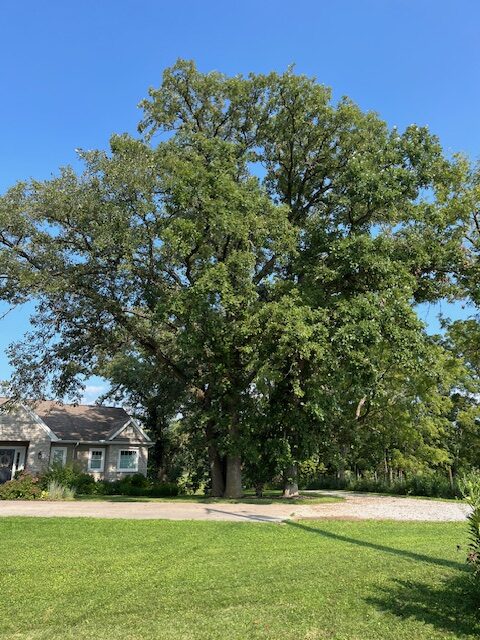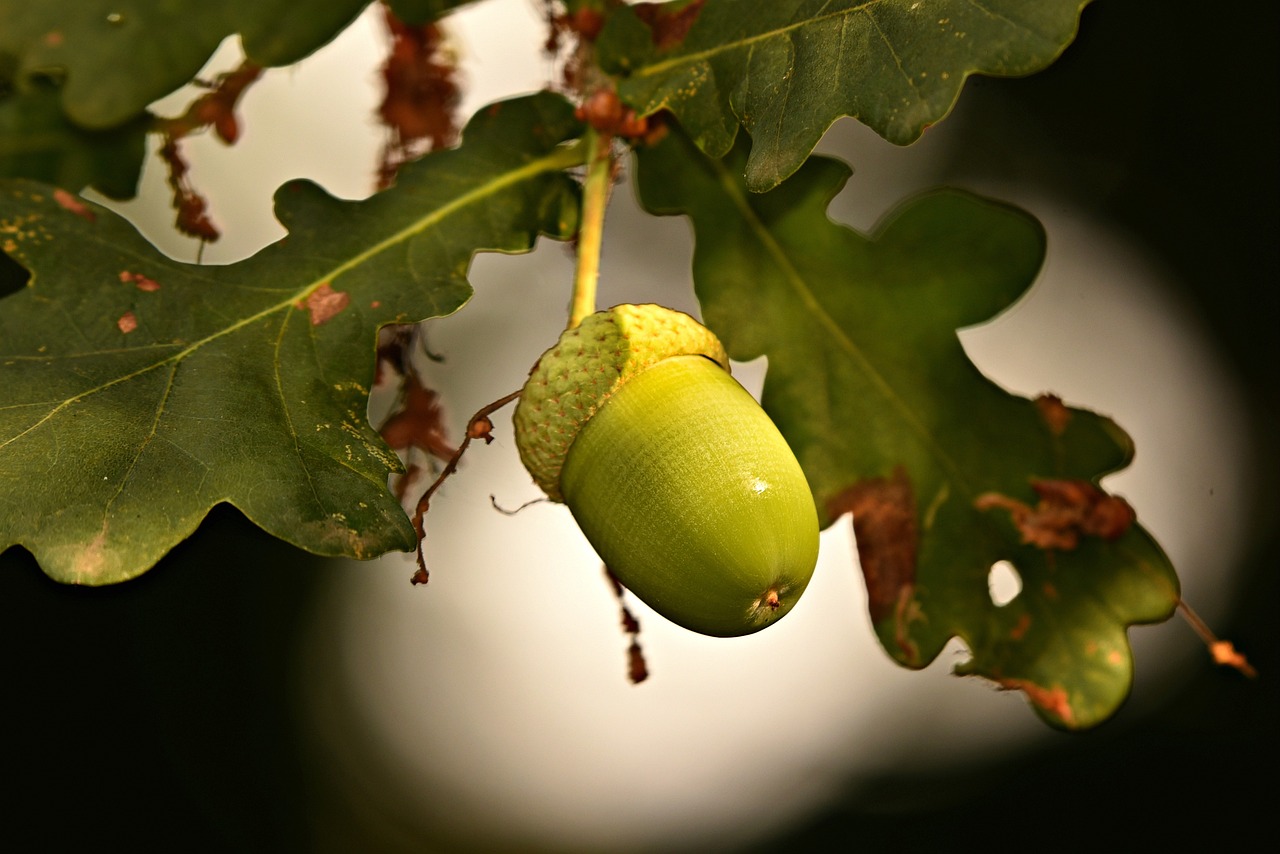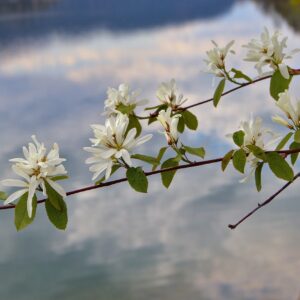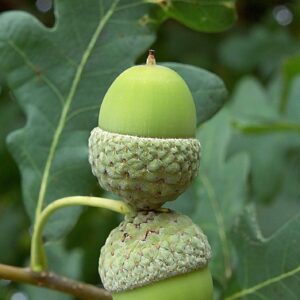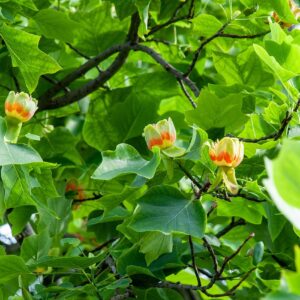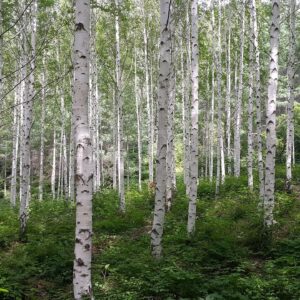The bur oak (Quercus macrocarpa) is a large and impressive oak tree native to North America. The bur oak is a majestic tree known for its large size, distinctive leaves and acorns, and its adaptability to various habitats. It plays a significant ecological role and holds cultural importance in the regions where it grows.
Appearance: Bur oak is a large deciduous tree that typically grows to a height of 70-80 feet (21-24 meters), with some specimens reaching up to 100 feet (30 meters) tall. It has a broad, open crown with stout branches. The trunk can reach diameters of 3-4 feet (1-1.2 meters). The bark is light gray and deeply furrowed with rugged, scaly ridges.
Leaves: The leaves of bur oak are large and distinctive, typically 6-12 inches (15-30 cm) long and 4-6 inches (10-15 cm) wide. They are deeply lobed with 5-9 rounded lobes per leaf, giving them a somewhat fringed appearance. The margins of the leaves are usually wavy or slightly toothed. In autumn, the leaves turn shades of yellow or brown before falling.
Acorns: Bur oak produces the largest acorns of any North American oak species, measuring about 1-2 inches (2.5-5 cm) long and 1 inch (2.5 cm) wide. These acorns are enclosed in a deep, fringed cap that resembles a bur, giving the tree its common name. The acorns mature in the second year and are an important food source for wildlife, including deer, squirrels, and birds.
Habitat: Bur oak is adaptable to a wide range of soils and habitats, from moist lowlands to dry uplands. It is commonly found in savannas, prairies, and open woodlands across central and eastern North America. It can withstand drought conditions better than many other oak species.
Wood: The wood of bur oak is strong, durable, and coarse-grained. It is used in construction, furniture making, and for fence posts. The acorn cups (burs) are also used decoratively in crafts.
Ecological Importance: Bur oak provides habitat and food for various wildlife species. Its large acorns are an important food source, and the tree itself offers nesting sites and cover for birds and mammals.

